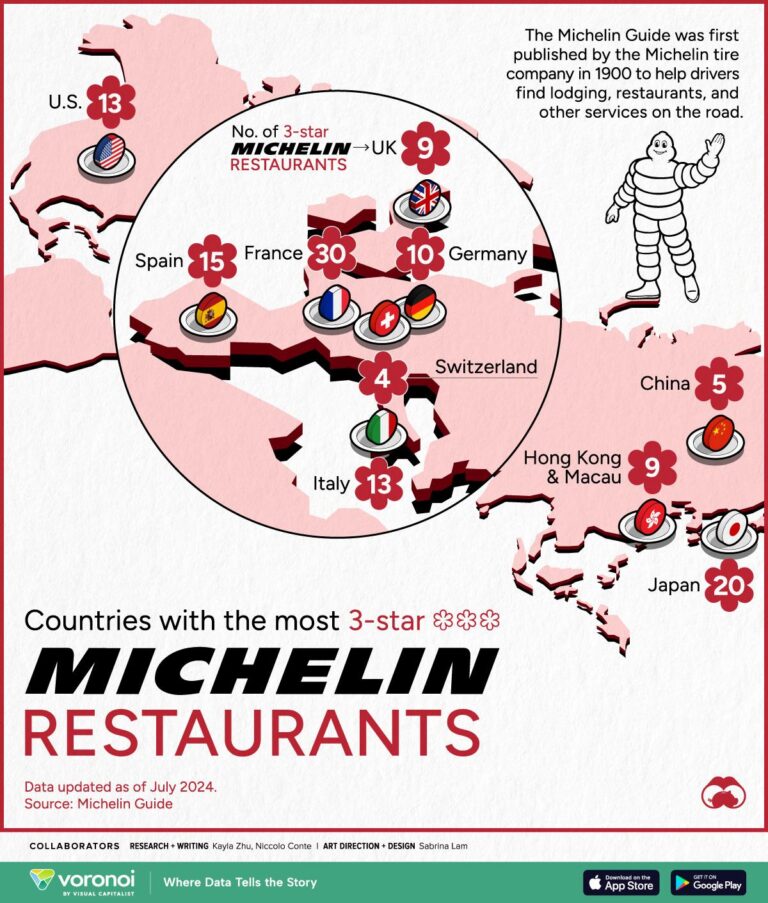The Ingenious Story Behind Michelin Stars: An Inside Look at Culinary Excellence
In the world of fine dining, few accolades hold as much prestige as the Michelin star. These coveted stars, awarded by the esteemed Michelin Guide, serve as a benchmark for culinary excellence, guiding food enthusiasts to the finest eateries across the globe. But the origin of this revered rating system is as fascinating as the chefs and restaurants it recognizes. In this article, we delve into the ingenious story behind the Michelin stars, exploring how a tire company’s marketing strategy evolved into one of the most influential guides in the culinary landscape, shaping both the industry and the dining experience for millions. Join us as we uncover the rich history and the innovative spirit that transformed a simple travel guide into an icon of gastronomic achievement.
The Origins of Michelin Stars and Their Cultural Impact
The story of Michelin stars originates from a seemingly simple premise: to promote automobile travel in France. In 1900, the Michelin brothers, André and Édouard, launched the Michelin Guide, initially providing practical information for travelers, including maps, tips for car maintenance, and a list of hotels and restaurants. By 1926, the guide began to introduce a star rating system to spotlight exceptional dining establishments. This move transformed the culinary landscape, leading to the prestigious three-star system we recognize today—one star for a very good restaurant in its category, two stars for excellent cooking worth a detour, and three stars for exceptional cuisine worth a special journey.
The cultural impact of Michelin stars extends beyond mere cuisine; it has influenced food trends, restaurant entrepreneurship, and even regional pride. Establishments adorned with Michelin stars often see a significant boost in patronage, and chefs may experience heightened status and media attention, shaping the way we view culinary craftsmanship. Here are some key cultural effects:
- Global Standardization: Michelin has established a universal standard for dining excellence, influencing gastronomy worldwide.
- Chefs’ Prestige: Earning a star can elevate a chef’s career, often turning them into culinary icons.
- Tourism Boost: Michelin-starred restaurants often draw travelers, promoting local economies and tourism.
The Rigorous Inspection Process Behind Michelin Ratings
The Michelin rating system is renowned not just for its prestige but also for the meticulous and rigorous process it employs to evaluate dining establishments. Inspectors, who often remain anonymous, visit restaurants multiple times to assess a variety of elements, ensuring that the integrity of their judgments remains intact. Their evaluations encompass several key factors including:
- Quality of Ingredients: The freshness and sourcing of the ingredients are pivotal to a restaurant’s standing.
- Mastery of Technique: The culinary skills employed in each dish must exhibit a high level of proficiency.
- Harmony of Flavors: Dishes should balance flavors cleverly, creating memorable dining experiences.
- Consistency: Each visit must reflect the same high standards, ensuring patrons can rely on the brand’s offerings.
The entire process involves comprehensive and meticulous note-taking, where inspectors categorize their observations under a structured rubric. Michelin utilizes a standardized scoring system, which helps in maintaining uniformity across its evaluations. These assessments often culminate in a table format that provides a quick reference to a restaurant’s strengths, enabling Michelin to maintain transparency and reliability in its ratings:
| Rating | Description |
|---|---|
| 1 Star | A very good restaurant in its category. |
| 2 Stars | Excellent cooking, worth a detour. |
| 3 Stars | Exceptional cuisine, worth a special journey. |
How Michelin Stars Influence Dining Trends and Chef Careers
The allure of Michelin stars extends beyond mere accolades; they shape the landscape of culinary arts and influence dining trends globally. When a restaurant earns a Michelin star, it not only boosts its visibility but also sets off a ripple effect that reverberates through the industry. Chefs strive to create innovative dishes that push the boundaries of gastronomy, often resulting in trends that can dominate the market. Popular movements such as locavore dining, plant-based cuisine, and molecular gastronomy have emerged as chefs experiment with techniques that win accolades and attention. The subsequent consumer demand encourages restaurants to adapt their menus, ensuring that they keep pace with evolving tastes influenced by these prestigious ratings.
Moreover, the impact of Michelin stars on chef careers cannot be underestimated. Receiving a star can propel a chef into the limelight, often leading to opportunities that might have otherwise been out of reach. As chefs gain recognition, they also influence upcoming talent, fostering a culture of mentorship and innovation within kitchens worldwide. This ongoing cycle contributes to the establishment of culinary schools and programs designed to prepare aspiring chefs for success in a competitive environment. The chart below illustrates the career trajectories often observed following received Michelin accolades:
| Career Stage | Impact After Michelin Recognition |
|---|---|
| New Chef | Increased attention from investors and restaurant groups |
| Established Chef | Opportunities for book deals and television shows |
| Owner/Operator | Ability to launch new establishments with high patronage |
Future Prospects for Michelin Stars in a Changing Culinary Landscape
The culinary world is witnessing an unprecedented transformation, with emerging trends reshaping the landscape of haute cuisine. As new dining concepts rise in popularity, the framework around Michelin stars is expected to evolve. Chefs around the globe are increasingly focused on sustainability, farm-to-table movements, and innovative culinary techniques that resonate with contemporary values. Michelin inspectors are likely to embrace these changes, as diners seek restaurants not only for exceptional taste but also for ethical practices and memorable experiences.
Moreover, the future of Michelin stars seems poised to challenge traditional notions of fine dining. Here are some trends that could influence the award’s evolution:
- Casual Dining: The rise of relaxed dining environments that prioritize comfort and accessibility.
- Global Influences: A tapestry of international flavors and techniques expanding culinary horizons.
- Technology Integration: The use of AI and data analytics in menu design and customer experience.
As the Michelin guide continues to adapt, restaurants that embrace creativity and diversity in their offerings may find their place among the stars, ensuring that the iconic rating system remains relevant in the hearts of food enthusiasts.
Concluding Remarks
In conclusion, the story behind Michelin stars is more than just a ranking system for restaurants; it encapsulates the evolution of culinary excellence and the quest for perfection in the dining experience. From its humble beginnings as a promotional tool for tire sales to becoming the gold standard in gastronomy, the Michelin Guide reflects broader cultural trends and the ever-changing landscape of the food industry. As chefs strive to attain this prestigious accolade, it serves not only as a benchmark of skill and innovation but also as a reminder of the passion and creativity that drive the culinary arts. As we continue to explore the relationship between food and culture, the Michelin star remains an emblem of culinary achievement — both revered and aspired to — shaping the future of dining for generations to come.




